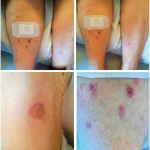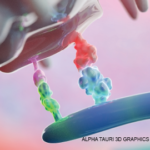 BALTIMORE—Every patient tells a story. As clinicians, we learn from each patient and use this hard-won wisdom to improve clinical management. At the 18th Annual Advances in the Diagnosis & Treatment of the Rheumatic Diseases symposium, held May 13–14 at Johns Hopkins School of Medicine, Baltimore, Uzma Haque, MD, associate professor of clinical medicine and co-director of clinical operations in the Arthritis Center, Johns Hopkins School of Medicine, used patient cases to discuss the management of difficult-to-treat rheumatoid arthritis (RA) and the management of RA in the context of important comorbidities.
BALTIMORE—Every patient tells a story. As clinicians, we learn from each patient and use this hard-won wisdom to improve clinical management. At the 18th Annual Advances in the Diagnosis & Treatment of the Rheumatic Diseases symposium, held May 13–14 at Johns Hopkins School of Medicine, Baltimore, Uzma Haque, MD, associate professor of clinical medicine and co-director of clinical operations in the Arthritis Center, Johns Hopkins School of Medicine, used patient cases to discuss the management of difficult-to-treat rheumatoid arthritis (RA) and the management of RA in the context of important comorbidities.
Difficult-to-Treat RA
Dr. Haque explained that difficult-to-treat RA can entail many elements, such as severe disease, poor prognostic factors, multiple drug toxicities, extra-articular disease and significant comorbid conditions. Other elements that may complicate care include adherence and compliance with the medical plan, poor access to healthcare and medications, low health literacy and misalignment of patient and clinical goals.
The European Alliance of Associations for Rheumatology (EULAR) has developed a specific definition for difficult-to-treat RA, which includes three features:
- Treatment failure of two or more conventional synthetic disease-modifying anti-rheumatic drugs (DMARDs), unless they are contraindicated; and treatment failure of two or more biologic or targeted synthetic DMARDs with different mechanisms of action;
- Signs suggestive of active disease progression; and
- The management of the signs and symptoms of RA being perceived as problematic by the rheumatologist and/or patient.
Signs of active disease progression may include moderate disease activity on such measures as the Clinical Disease Activity Index (CDAI) or Disease Activity Score-28 for Rheumatoid Arthritis with erythrocyte sedimentation rate (ESR) (DAS28-ESR); inability to taper glucocorticoids to less than 7.5 mg daily of prednisone; rapid radiographic progression of disease, with or without active signs of RA; or well-controlled disease but ongoing RA symptoms causing reduced health related quality of life.1
In cases of difficult-to-treat RA, Dr. Haque noted it sometimes helps to employ ultrasound or magnetic resonance imaging (MRI) to detect active subclinical disease. It’s also essential to evaluate for non-inflammatory syndromes, such as concurrent fibromyalgia, symptoms related to concomitant osteoarthritis, how psychosocial factors are affecting patient symptoms and the patient’s coping skills.
If a patient is not doing well, several items should be revisited by the rheumatologist:
- Is the underlying RA diagnosis correct? This question may be especially pertinent for patients with seronegative disease; and
- Was the length of time on a prior therapy sufficient to see a treatment effect? If a patient has had a side effect with a medication, it may be worth exploring if there is a way to mitigate that side effect to determine if the medication can ultimately be tolerated and help the patient.
In patients for whom all treatments have truly proved inadequate, rheumatologists can consider older treatments, such as azathioprine with methotrexate, cyclosporine with methotrexate, anti-IL-1 antibody therapy, mycophenolate mofetil or tacrolimus. It may also help to ask patients—in a nonjudgmental manner—if they are skipping or missing doses of their medications or having trouble affording medications or receiving refills in a timely manner.
For patients with RA who are suffering primarily from non-inflammatory symptoms, optimizing exercise, patient education, self-management programs, psychological interventions to improve coping and matched goal setting between patient and doctor can enhance care.
It may be helpful to employ ultrasound or magnetic resonance imaging to detect active subclinical disease in cases of difficult-to-treat RA.
Patient Cases
In the 2021 ACR guideline for the treatment of RA, a non-tumor necrosis factor (TNF) α inhibitor, biologic DMARD or targeted synthetic DMARD is conditionally recommended over the addition of a TNF inhibitor in patients with New York Heart Association class III or IV heart failure.2 However, Dr. Haque pointed out the management of these patients is complicated by an increased risk of major adverse cardiac events in patients treated with tofacitinib, as evidenced by the ORAL Surveillance study.3 Thus, although heart failure was not included in the study’s major adverse cardiac events category, it would be reasonable to worry about the potential cardiovascular effects of Janus kinase (JAK) inhibitors in patients with pre-existing heart failure.
Dr. Haque described a patient with RA who had been well managed with leflunomide and adalimumab. However, during the course of care, the patient was found to have myasthenia gravis. This new diagnosis prompted Dr. Haque to ask: Is there a link between RA and myasthenia gravis? Is TNF inhibitor therapy contraindicated in patients with myasthenia gravis?
For both questions, a definitive answer based on the literature does not exist, but Dr. Haque noted that both leflunomide and methotrexate have shown some degree of steroid-sparing efficacy in the treatment of patients with myasthenia gravis. Regarding biologics, some data exist for the use of tocilizumab, tofacitinib and abatacept to treat myasthenia gravis. Perhaps the most robust evidence exists for rituximab, which has been used to treat refractory cases of myasthenia gravis.
On the subject of demyelinating diseases, Dr. Haque noted that methotrexate, leflunomide, abatacept and rituximab may all be appropriate treatments for patients with concomitant RA and multiple sclerosis. However, the use of tocilizumab and tofacitinib must be approached with caution due to case reports of central nervous system demyelination associated with these medications.
Regarding the co-management of patients with specialists in other fields, Dr. Haque described a patient with RA and compensated alcoholic cirrhosis. When using any biologic agent, she noted, it’s vital to co-manage such patients with a hepatologist, who can closely monitor hepatic parameters, and to recognize that limited data exist on the long-term safety of various RA medications for these patients. In terms of conventional synthetic DMARDs, hydroxychloroquine and sulfasalazine appear to be relatively safe. Among biologic treatments, TNF inhibitors, abatacept and rituximab may also be appropriate. Dr. Haque noted that patients with significant renal insufficiency require special attention when selecting appropriate therapy.
Jason Liebowitz, MD, completed his fellowship in rheumatology at Johns Hopkins University, Baltimore, where he also earned his medical degree. He is currently in practice with Skylands Medical Group, N.J.
References
- Nagy G, Roodenrijs NMT, Welsing PM, et al. EULAR definition of difficult-to-treat rheumatoid arthritis. Ann Rheum Dis. 2021 Jan;80(1):31–35.
- Fraenkel L, Bathon JM, England BR, et al. 2021 American College of Rheumatology Guideline for the Treatment of Rheumatoid Arthritis. Arthritis Rheumatol. 2021 Jul;73(7):1108–1123.
- Ytterberg SR, Bhatt DL, Mikuls TR, et al. Cardiovascular and cancer risk with tofacitinib in rheumatoid arthritis. N Engl J Med. 2022;386(4):316–326.



